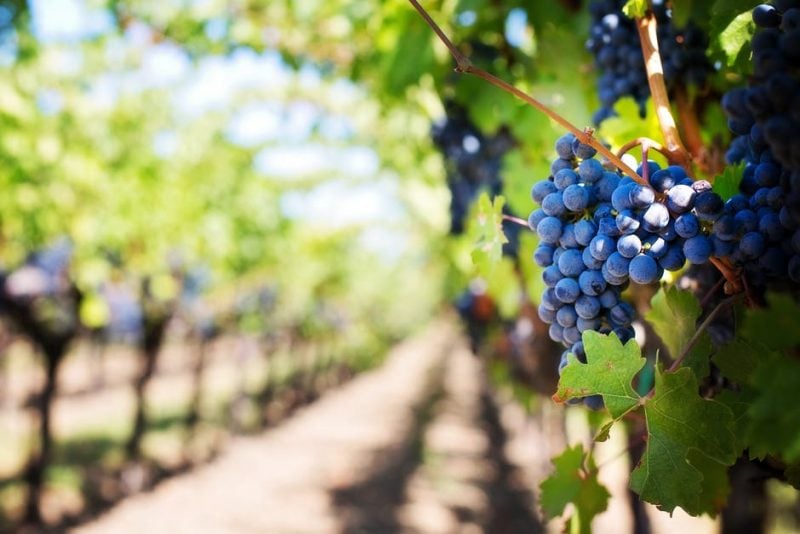6 Important Considerations for Commercial Grape Growing
There’s something headily romantic about being a vintner. We’ve seen the profession romanticized to the moon in back in mysterious spy movies and lovelorn soap operas—with the wealthy wine grower sporting marvelous garments and an exotic accent, extolling the virtues of the fine vintage he’s got swirling in his crystal and going on about how it was made from his very own vineyard and winery.
But while you don’t have to be a rich baron or a member of the landed gentry to grow grapes and produce wine these days, today’s statistics do paint a rosy picture for those who have found their place within America’s wine industry. Quoting data from the National Association of American Wineries, Wine Spectator Magazine notes that the sector will generate around $219.9 billion in 2017. All over the United States, the industry also directly employs close to 1 million individuals, who will earn an estimated $33.5 billion in wages in during the same year.
Indeed, wine production represents the most luxurious and artistic use of grapes, but it is far from being the only industry that benefits from this versatile crop. Grapes can also be consumed fresh or processed into other food products like raisins, jams, and juices. Figures from the National Agricultural Statistics Service show that the United States had over a million acres of grape-bearing lands in 2016, which produced 7.57 tons of fruits per acre, worth around $6.25 billion in 2016. In fact, these popular fruits are the highest-value crop in the United States, representing almost a third of the value of all non-citrus fruits in the country.
Given the economic impact of viticulture and winemaking in the United States, it’s understandable why enterprising farmers would want to grow grapes commercially. And thanks to the grapes’ somewhat innate hardy qualities, it’s quite achievable to grow the vines in many farmlands across the United States, especially on the West Coast. Naturally, growing any crop requires specific care and effort in order to make them really flourish, especially in case of less-than-ideal climatic, soil, water, and nutritional conditions.
For a clearer picture on these particular considerations, you may want to take advantage of agricultural aerial imagery services, wherein specialists take pictures of the vineyard from the air using planes. This is not just in order to get a bird’s eye view of the location, but also to analyze it on a biological and chemical level. Spectral imagery can provide valuable data about the different factors that affect crop health, including water stress, nutrient supply issues, the presence of pests, soil problems, and many others. By using such a service, you can obtain the necessary information that you’ll need in order to adjust your farming methods accordingly.
With that said, here are some of the things you should keep in mind when you do decide to grow grapes commercially:
What sort of grape variety will be grown?
Do you want grapes that are perfect for wine-making, or those specifically for table consumption? Or maybe you need grapes for producing jam or juice in commercial quantities? By deciding on the grape variety to grow, you’ll have a much easier time making other decisions that matter during the planning stage.
Where will the grapevines be planted?
Grapes need lots of warm sunshine to flourish, as well as soil that’s well-watered but one that has good drainage and doesn’t stay soggy throughout. Therefore, the perfect location to plant the vines would be on an estate with a gently-sloping terrain. Slopes and hillsides receive better amounts of sunshine compared to flat tracts of land, and they also afford better drainage. A sloping terrain also prevents frost—which could injure the crops—from forming.
Temperature is likewise a very important factor in viticulture. While each grape variety has unique requirements when it comes to climatic conditions, temperatures of between 15 °C (59 °F) and 22 °C (72 °F) during summers and an average temperature of around 3 °C (37 °F) during winters are considered ideal for most species.
What is the soil quality like?
Grapes need good soil to flourish in, specifically soil with a pH level that’s between 6.0 and 6.5. Aside from this, other important soil quality considerations include having loose texture and air gaps for aeration, adequate but moderate fertility, and as mentioned, good drainage. It’s best to have the soil tested before starting operations so you’re aware of what you’re working with and can adjust accordingly. Consultation with your local grapevine breeders may clue you in as to what cultivar is perfect for your region, too.
How will you protect your grapes from pests?
It’s not just people who love grapes; birds, deer, insects and other wildlife also desire the delectable, sweet fruit and will definitely jump at any opportunity to enjoy some from your orchard. Fencing and netting will do a great job in protecting the precious vines from any harm or injury that these sneaky critters could cause.
What kind of diseases will the grapes be susceptible to?
Grape vines can be exceptionally fragile to mildew and fungal diseases, and such problems are most likely going to crop up if you don’t have a proper plan in place for pest and disease control or remediation. Research as much as you can about the kind of disorders that can attack grapevines in your region, and consult with experts for the best possible treatment options. You can also pick grape cultivars that are resistant to those specific diseases.
Is your commercial operation properly equipped?
You also need to consider if your operations will be well-equipped to grow and harvest grapes, especially if you’re starting from the ground up. The most important machinery and equipment to have include trucks, tractors, and tillers, as well as various gardening tools for each of the workers.
Keep these considerations in mind should you decide to get into starting your own vineyard and winery operations. There are definitely more than just these steps, but these should be the most important ones. With that said, good luck and have a good harvest!





I agreed with your all 6 considerations, all your Idea related to on this topic is great and outstanding, so keep sharing more information about this.